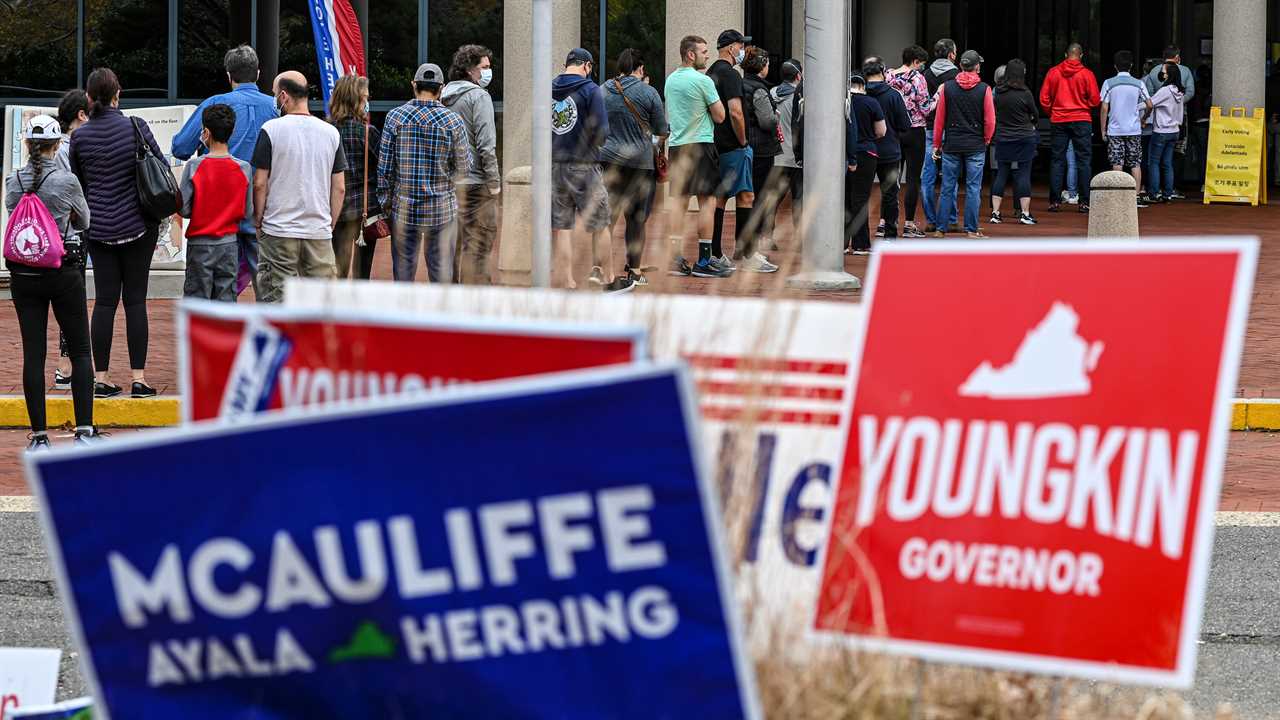
Ever since Barack Obama swept into the White House on the strength of record turnout, it has been an article of faith among Democrats that the more people who vote, the better the party will fare.
When turnout sagged, during the 2010 and the 2014 midterm elections, Republicans won wave elections. In 2016, fewer people voted than in 2012 and Donald J. Trump won the presidency, shocking Democrats and turbocharging a more explicit Republican argument that making voting harder would make it easier for the G.O.P. to win elections.
Then turnout jumped again in the Trump years — in Virginia four years ago, in special elections and in the 2018 midterms. Joseph R. Biden Jr. ousted Mr. Trump in a national election with record-high turnout. Republicans spent the next year, in states they control, fighting to make it harder to vote and promoting lies that the 2020 turnout had been stocked with fraudulent Democratic votes.
How then to explain the election on Tuesday in Virginia, where Glenn Youngkin, now the Republican governor-elect, beat former Gov. Terry McAuliffe in a contest in which at least 25 percent more votes were cast than in any governor’s race in the state’s history? (The number will go up; mail-in ballots postmarked by Election Day will be counted as long as they are received by this Friday.)
Mr. Youngkin won the first governor’s race contested under new voting laws adopted by the Democratic majorities elected in 2019 to the state’s General Assembly.
Virginia Democrats and Gov. Ralph Northam repealed the state’s voter ID law, enacted 45 days of no-excuse absentee voting, made Election Day a state holiday and enacted automatic voter registration for anyone who receives a driver’s license in Virginia.
Making it easier to vote worked.
In this week’s election, Mr. McAuliffe won 200,000 votes more than Northam did when he won the 2017 election in a blowout. He won nearly 600,000 more votes than he did in 2013 when he beat Kenneth Cuccinelli II to become governor. He beat his internal turnout targets in Northern Virginia, Richmond and the Norfolk area. Turnout was strong in Black precincts, college towns and the suburbs, all traditional areas of strength for Democratic candidates.
Yet Mr. Youngkin still got more votes, buoyed by turnout near presidential-election levels across rural Virginia and better than anticipated numbers in the outer suburbs of Washington. He won far more votes than Mr. McAuliffe’s team or virtually any of the public polling had anticipated.
“We’re at a dangerous inflection point where we have one group of people who assumes turnout solves all of our problems and another group that wants to tune out whole swaths of voters,” said Guy Cecil, the chairman of the Democratic super PAC Priorities USA. “There are millions of people across the country who are inclined to vote for Trump or Republicans who don’t vote.”
In some of the most important battleground states, like Wisconsin and Pennsylvania, Mr. Cecil said, a majority of the voting-age public is white people without college degrees, a demographic that has been trending away from Democrats since 2008 and broke strongly against Mr. McAuliffe in Virginia, according to exit polling.
If turnout in the 2022 midterms spikes in Wisconsin and Pennsylvania, which both have Senate and governor’s races on the ballot, it may not necessarily benefit the Democratic candidates.






